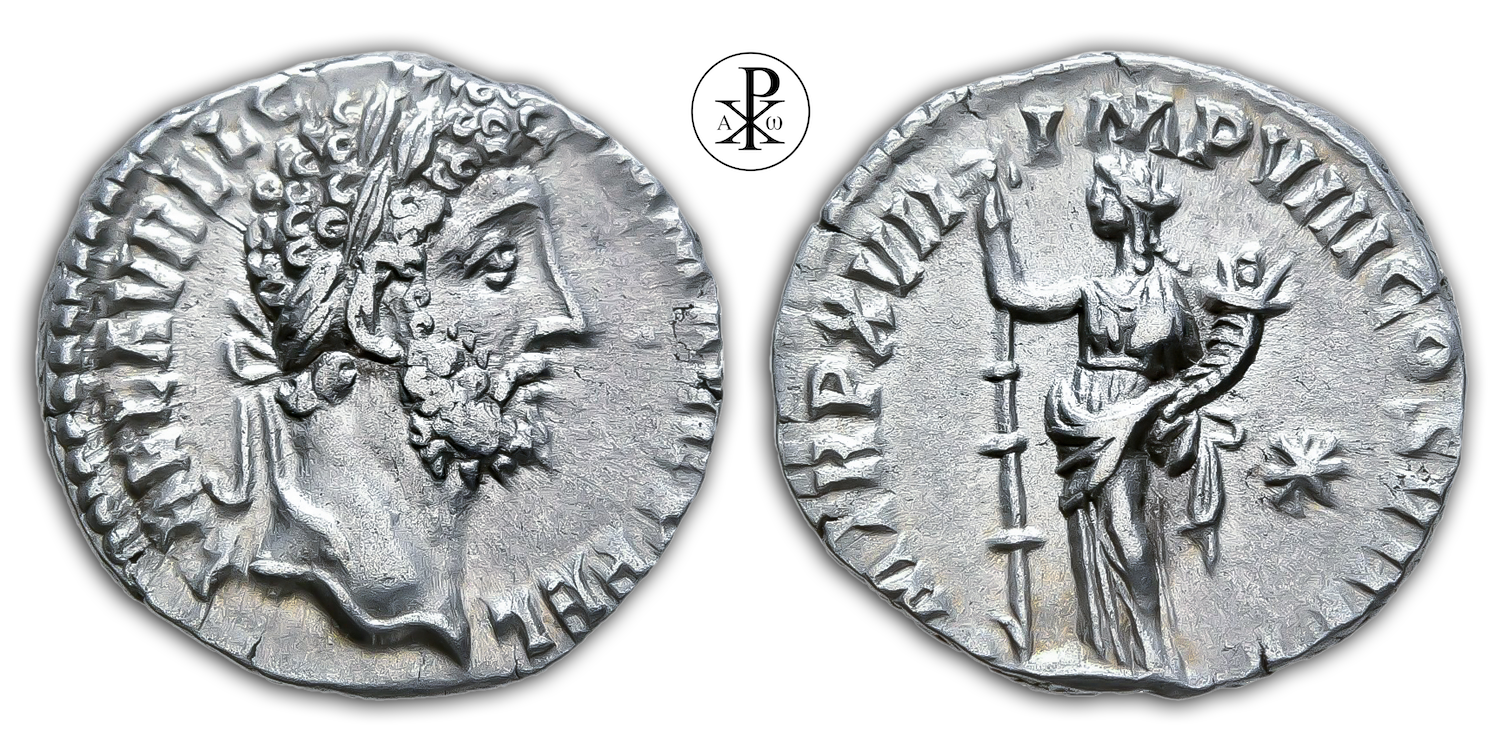Imperator Caesar Lucius Aelius Aurelius Commodus Augustus Pius Felix
Reign: Commodus
Mint: Rome
Date: 192 AD
Nominal: Denarius
Material: Silver
Diameter: 17mm
Weight: 2.82g
Reference: RIC III Commodus 234 var. (star right)
OCRE Online: http://numismatics.org/ocre/id/ric.3.com.234
Rare: R2
Provenance: Subastas Ibercoin Numismaticas Madrid, Spain (Auction 80, Lot 614)
Pedigree: –
Special: Variation star in field right
Obverse: Head of Commodus, laureate, right
Inscription: L AEL AVREL COMM AVG P FEL
Translation: Lucius Aelius Aurelius Commodus Augustus Pius Felix
Translation: Lucius Aelius Aurelius Commodus, the pious and fortunate Augustus
Reverse: Fides Militum, standing left, holding standard in right hand and cornucopiae in left hand; in field, star, right
Inscription: P M TR P XVII IMP VIII COS VII P P
Translation: Pontifex Maximus, Tribunicia Potestate Septima Decima, Imperator Octavum, Consul Septimum, Pater Patriae
Translation: High priest, holder of tribunician power for the 17th time, Imperator for the eighth time, consul for the seventh time, father of the nation
Comment: Fides was the Roman personification of trust, loyalty and oath. She was also venerated under the name Fides Publica Populi Romani (roughly „general trustworthiness of the Roman people“). According to tradition, Rome’s second king Numa Pompilius established annual festivals in honour of Fides, and instituted that the higher priests (the three flamines maiores) were brought to the temple in a covered vaulted chariot drawn by two horses. There they were to conduct Fides‘ services with their heads covered and their right hands wrapped up to their fingers, thus showing absolute devotion to Fides and symbolising trust. There is historical evidence of the erection of a temple on the Capitol during the 1st Punic War. Its temple in Rome, consecrated in 254 BC by the consul Aulus Atilius Caiatinus, was located on the Capitol near the temple of Jupiter. Here the Roman Senate signed and kept treaties with other states, entrusting them to Fides‘ protection. As a rule, a standing woman is depicted, usually with ears of corn and a basket of fruit or a cornucopia and bowl. She thus embodies the „Fides publica“ – the promise of trust and loyalty between the emperor and the Roman people. In the later – and increasingly uncertain – imperial period, more and more issues of the „Fides militum“ and the „Fides exercitus“ were added, mostly with military attributes such as spear, sceptre, standard or aquila. These coins fervently invoke the loyalty of the legions and soldiers to their emperor.
The coinages of the year 192 AD can be roughly divided into three groups, which were apparently minted one after the other. The first group seems to date from the beginning of the year. The obverse sides still show the curly head of Commodus with the laurel wreath. The reverse sides show, among others, Fides, Mars, Victoria or Liberalitas. The second group of the first Hercules series seems to have been minted after the first group. The obverse sides again have the curly head of Commodus with laurel wreath. The reverse sides now show a standing Hercules wreathing a tropaeum – or a „Hercules Romanus“, his foot placed on a prora, he seems to be about to accept ears of grain from the personification of Africa opposite him. Finally, the third group and thus the second Hercules series, all of which show the head of Commodus with the lion’s skin, short-cropped hair and a shorter beard on the front – a hairstyle also shown on the head of Mantua. The backs of this last group are without exception dedicated to „Hercules Romanus“.
From the years 191 and 192 AD comes a group of coinage which can be summarised as the “protector series”. Chantraine interprets these issues as an appeal by Commodus to all his protecting gods, who had obviously stood by him when his life and rule were threatened. In any case, a renewed spectacular threat to Commodus’ government and life is probably the background and occasion for the “protector series” just mentioned. The Fides Militum denarius presented here and the Mars Ultor coins issued in the same way (in association with the other tutelary deities) speak for the uncovering of a military plot in the last months of AD 191 (Beaujeu). To what extent the “Julius Alexander Affair” in the same year was connected with a possible military plot cannot be clearly verified historically. The latter had killed a lion on horseback during a hunt, which apparently aroused Commodus’ jealousy. It is possible that the lion hunt was an imperial activity and that the killing of the animal was a deliberate provocation of Julius Alexander – in order to gain the throne himself. In any case, Commodus sent assassins after him, whereupon Alexander had all his enemies killed in his home town of Emesa and then fled. On the run, however, he committed suicide. Julius Alexander may have been related to Julia Domna. Grosso considers that this affair went as far as Rome (possibly also to a conspiracy within the military).
The silver denarius presented here is the rare variant “star in the field on the right”. Normally the star is found in the field on the left.
